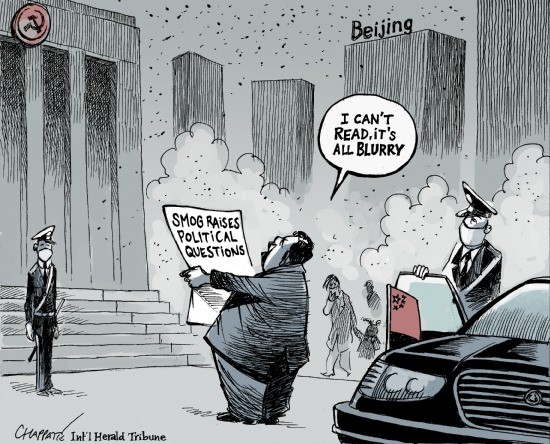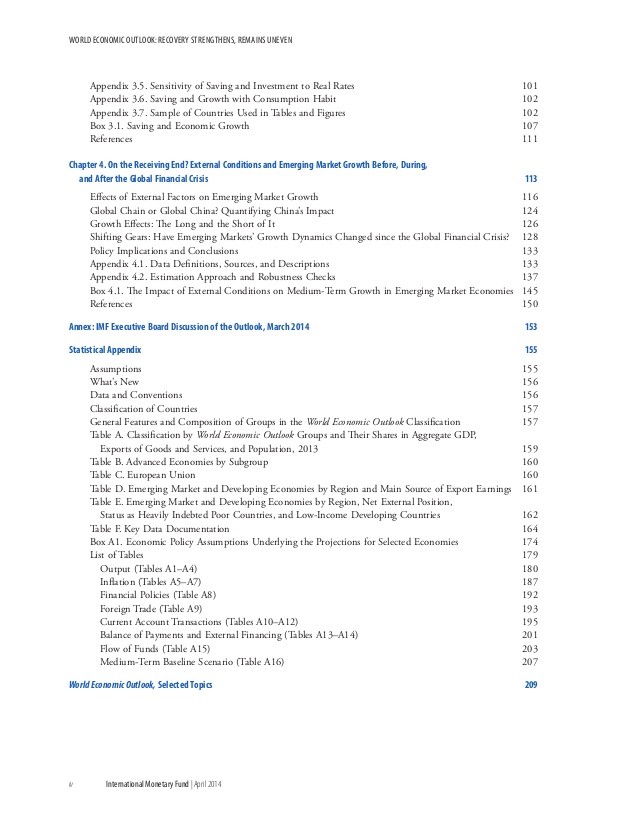Investing Implications Of An Uneven Global Economy
Post on: 14 Июнь, 2015 No Comment

PIMCO Cyclical Outlook for the Americas: Recovery Remains Intact, Yet Uneven
- U.S. growth can potentially exceed expectations over the cyclical horizon, in part bolstered by a healing consumer and a very accommodative Federal Reserve.
- While real growth in Canada has been modest in recent years, it increased to 3.1% in the second quarter and we expect that positive momentum to continue this year.
- In Latin America, we expect growth will pick up for the region as a whole with outperformance by smaller economies like Colombia and Panama.
Article Main Body
Each quarter, PIMCO investment professionals from around the world gather in Newport Beach to discuss the firm’s outlook for the global economy and financial markets. In the following interview, portfolio managers Mike Cudzil, Ed Devlin and Lupin Rahman discuss PIMCO’s cyclical outlook for the U.S. Canada and Latin America.
Q: What is PIMCO’s outlook for the U.S. over the next year? Have we turned a corner?
Cudzil. As we move through this economic cycle, PIMCO remains optimistic on the U.S. economy over the next 12 months. We expect GDP growth of 2.5% to 3%, with upside risks to our forecast.
The market began 2014 with an optimistic outlook on growth in the U.S. This optimistic outlook, coupled with the potential for the Federal Reserve’s tapering of asset purchases, led to concerns about higher yields, potentially depressing growth in this finance-based leveraged economy. The Fed managed market concerns using strong forward guidance, causing forward yields on the long end of the Treasury curve to fall 0.6%–0.8%.
Lower yields have been a tailwind for economic activity, helping to maintain at- or above-trend growth, setting aside the first quarter of 2014. In that all-but-forgotten quarter, GDP came in at a much worse than expected −2.1% (post revisions), primarily due to a harsh winter and a slowdown in housing market activity. Thus far, that disappointment has proven to be a hiccup.
PIMCO’s growth expectations for the U.S. are driven by the lack of fiscal restraint – which has weighed on growth over the last three years – plus a continued increase in capital expenditures, a consumer that has deleveraged, a closing of the output gap leading to a modest increase in wages and, finally, a further decline of the unemployment rate.
PIMCO forecasts that the government’s contribution to GDP will no longer detract from growth as state and local government growth in spending will completely offset any reduction in spending on the federal side.
Capital expenditures have displayed uneven rates over the past few years, but signs point to growth over our cyclical horizon. Given that capacity utilization recently reached its highest level since 2006 and high levels of cash remain on corporate balance sheets, businesses seem more likely than at any point of this business cycle to increase capital expenditures.
The consumer is in a much improved financial position, with debt-to-income levels the lowest in over 10 years, and financial obligation ratios the lowest in history. We believe consumer confidence is near cyclical highs due to strong employment growth and moderate wage increases. The increased willingness to borrow has been met with banks’ increased willingness to lend. However, high levels of student debt and income inequality offset some enthusiasm regarding consumers.
The biggest risk we see is the growing disparity between the very wealthy and the middle class, which could lead to a more muted consumer spending impulse due to lower real wages and lower real net worth for many. This has implications for consumer confidence and, ultimately, consumer spending. Another risk would be uncertainty outside of the U.S. with China slowing and Europe displaying deflationary risks. Finally, heightened geopolitical uncertainty could weigh on asset prices.
Q: Could you describe The New Neutral and how it applies to PIMCO’s near-term outlook for Fed policy?
Cu dzil . In the aftermath of the financial crisis, PIMCO believed that growth in the U.S. would be subdued at a “New Normal” rate of 2% for an extended period – a view that has thus far come to fruition. As we move forward, we believe that growth could achieve slightly higher levels over the cyclical horizon, in part bolstered by a healing consumer and a very accommodative Federal Reserve.
PIMCO believes that in an overleveraged finance-based economy, borrowing costs reverting to historical levels would be unsustainable and could stanch this economic recovery. As a result, we expect that The New Neutral fed funds rate will be much lower than historically has been the case. The neutral level of borrowing costs is well below historical levels, perhaps as low as 2% on a nominal basis and 0% on a real basis.
At PIMCO, we look for the Federal Reserve to be cognizant of this dynamic and raise the fed funds rate at a slower pace and with a lower peak than in past cycles. This new Fed reaction function will have investment implications across all asset classes.

Q: What is the growth outlook for Canada, and how does the housing market factor in?
Devlin. While real growth in Canada has been modest in recent years, it accelerated to 3.1% in the second quarter and we expect that positive momentum to continue into the third quarter and the rest of 2014. However, an important distinction for Canada right now is between “good” growth (growth that leads to a sustainable recovery) and “bad” growth (growth that has the potential to be destabilizing in the future). Growth in Canada in recent years has been mostly the “bad” kind – consumers borrowing money at very low rates of interest to buy large houses and other goods. Recently, the economy has started to generate more of the good: growth in exports – which has been a drag due to the slow U.S. economic recovery. We see third-quarter growth beating the Bank of Canada’s (BoC) forecast of 2.3%.
Q: What is the likely policy path from here for the Bank of Canada?
Devlin. The BoC’s accommodative monetary policy since the crisis has worked as intended, but it came with a cost: potential financial instability. Canadians are now more indebted than ever and housing prices are extremely high. Governor Stephen Poloz has appeared more concerned with disinflation and growth than financial stability, but the most recent BoC statement did note the housing market is reaccelerating.
We think it would be prudent for the BoC to communicate its intention to begin tightening monetary policy in the not-too-distant future, especially if real GDP growth reaches 3% or higher starting in the third quarter. With inflation at 2.1% and growth accelerating, we see the BoC moving toward a tightening bias in the coming months. However, we would not expect actual rate hikes until sometime in 2015, with the BoC proceeding slowly and cautiously.
An important question in our view is not when will they start hiking, but when will they stop? Given the aging society, productivity issues and the massive accumulation of consumer debt, we believe the neutral rate is meaningfully lower than the pre-crisis level of 4% nominal – likely closer to 2.5%–3.0% nominal (or 0.5%–1.0% real, assuming 2% inflation). This is our baseline forecast, assuming an orderly resolution to the inflated housing market.
Q: What is the outlook for economies in Latin America, given uneven growth in the region?
Rahman. We forecast Latin America to grow around 2%–2.5% year over year in the next four quarters, moving up from the relatively sluggish growth rates we saw in the first half of 2014 but remaining well below the 5%–6% growth rates prior to the 2008 crisis. Distinct from previous cycles, smaller economies will see higher rates of growth, particularly Colombia, Panama and Paraguay as they benefit from a combination of supply-side measures and increased growth led by investment/foreign direct investment (FDI).
Among the region’s larger economies, we expect Mexico to see a pickup in growth toward 2.5% as the impressive reforms spearheaded by President Peña Nieto gain momentum. With the majority of second-round legislation having been passed, focus is expected to turn toward implementation, particularly in the energy sector, which should see FDI inflows increase. In addition, Mexico should disproportionately gain from its proximity to and trade linkage with the U.S. as that economy continues to heal.
Focus will also be on Brazil, where we have seen a sharp slowdown in growth and where presidential elections will be held in October. Our expectation is that growth will remain muted around 1%–1.5% in the near term, with potential for improvement in the latter part of next year.
Q: Is rising inflation on the horizon in Latin America? Do you see any risk of significant policy surprises?
Rahman. The region should see a decline in inflation over the next few quarters on the back of slowing activity and the base effects from previous quarters. In Brazil we expect inflation to be sticky around the 6% area, while in Mexico the headline consumer price index should moderate toward 3.5%. Elsewhere, including in Peru and Chile, we expect a mix of moderating price pressures as growth slows. The key risks to inflation are from currency weakness that may arise on the back of a stronger U.S. dollar.
In terms of policies, we expect Latin American economies to follow the pace set by the U.S. Europe and China, with most economies being reactive to global forces. We also expect idiosyncratic country factors to be important, particularly in Mexico with structural reform implementation and in Brazil with the elections.
Q: What are the implications of PIMCO’s cyclical outlook for investors in these regions?
Cudzil. Given PIMCO’s cyclical outlook for growth in the U.S. coupled with our New Neutral outlook for the fed funds rate, PIMCO believes this framework has investment implications for all assets. In general, a lower level of the neutral fed funds rate should equate to a higher valuation for risk assets and a lower “fair” level of rates in fixed income markets. PIMCO believes that markets are priced close to fair value in rate space, with select credit and non-agency mortgage-backed securities offering the best risk-adjusted returns. Fixed income should return 3% while equities should offer 4%–5% going forward, in our view.














